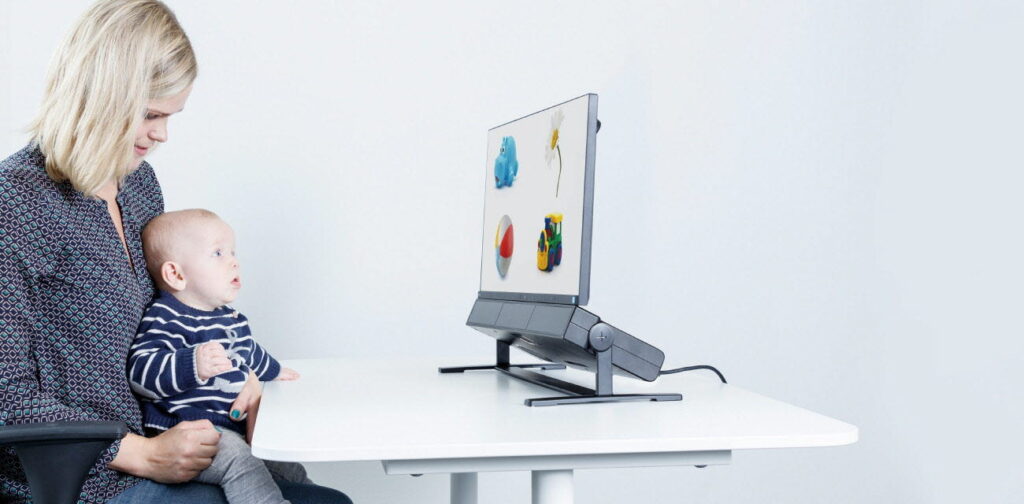
Infant and Child Research
Infant and child researchers use eye tracking to study perceptual, cognitive, and social emotional development from birth through early adulthood.
Why use eye tracking in infant and child research?
Here is a video from our customer Uppsala Child and Baby Lab. In the video Professor Gustaf Gredebäck explains the value of eye tracking, the different types of research that are conducted at the lab, some of the different research paradigms that they employ and finally where eye tracking could go in the future.
Researchers can use this tool to investigate spatial relations, problem solving, number sense, language acquisition, and cause and effect relationships, as well as social interaction and gaze following. Eye tracking data can help explore infants’ ability to categorize visual, linguistic, and auditory events, and scan dynamic human faces.
Among older children and adolescents, researchers study cognitive processes like executive function and social interaction. Due to the more portable, lightweight design of today’s eye tracking systems, these studies can now be carried out in real-world environments.
Products and services
Tobii Pro offers eye tracking systems for psychology and neuroscience studies in a controlled research setting, such as a lab, as well as examining human behavior in real-world environments, like in an office or home. Analyzing data is made easier with our various software solutions and their ability to work with other companies’ solutions.

The Tobii Pro Spectrum eye tracking platform offers multiple sampling rate options up to 600 Hz, which accommodates everything from fixation-based research to studies with more intense requirements on data granularity and time-based measurements. This sampling rate allows researchers to study fine eye movements such as saccades, micro-saccades, tremor, fixations, or capture physiological indicators (e.g. pupil size and blinks).
The system tolerates large head movements, making it ideal for studies with infants and children.
The Pro Spectrum’s widescreen high-definition display supports a broad range of demanding visual presentations. From social interaction to preferential looking paradigms, image and video stimuli are rendered with clarity.
The TTL port and precise timing enable seamless synchronization capabilities with external biometric data sources such as EEG and GSR, providing a more holistic view of behavior.
Learn more about the Tobii Pro Spectrum.
Screen-based eye tracker, capturing gaze data at speeds up to 250 Hz. The system supports from fixation to saccade-based research. The compact form-factor allows you to collect eye tracking data wherever your participants are, rather than a typical lab setting, if needed.
Learn more about Tobii Pro Fusion.

Designed for the real world, our third-generation wearable eye tracking solution allows you to conduct behavioral research in a wide range of settings. Tobii Pro Glasses 3 delivers robust eye tracking and accurate gaze data while giving users the freedom to move and interact naturally.
Learn more about Tobii Pro Glasses 3.
Software
The Pro Spectrum works with Tobii Pro Lab, a versatile biometric software platform designed to meet the highest demands in different research scenarios with exact timing accuracy. This software supports the entire process – from test design and recording, to the interpretation and presentation of results while offering the ability to sync with other biometric data sources.
Stimuli can be shown on screen for as short as 50 milliseconds, making it suitable for research requiring very high precision in timing. When stimuli are presented, TTL signals are sent to sync the stimuli presentation and data recording with external research systems. This capability will allow researchers to ask more complex questions, for example, when adding eye tracking to their EEG research.
Tobii Pro SDK is available for researchers who wish to develop niche applications or scripts for use with the Pro Spectrum.
Learn more about Tobii Pro Lab.
